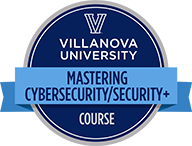Who Should Register?
Mastering Cybersecurity/Security+ is designed for the cyber or IT security professionals interested in learning more in-depth information about the cyber security profession, as well as those interested in obtaining the CompTIA Security+™ certification.
Are you an experienced cybersecurity professional?
If you can answer “yes” to these questions, then you may be ready for Mastering Cybersecurity/Security+. If not, then you should begin with Essentials of Cybersecurity.
- Are you familiar with the most commonly used ports, protocols, and services?
- Are you familiar with IT components such as Windows AD, DNS, and routers/switches?
- Are you familiar with networking protocols such as TCP or UDP?


